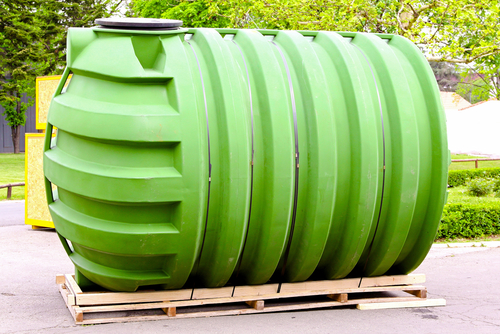Managing UST compliance takes a long-term commitment for facility operators who have to fill out dozens of forms and checklists and maintain accurate records, to mention a few of the many requirements. But even those facilities that are doing everything right should anticipate an inspection at some point, with or without prior notice.
 |
One way to ease the apprehension of a pending inspection is to perform frequent walk-through inspections to double-check both proper equipment operation and the status of required release response supplies and materials. The EPA recommends conducting these inspections at least monthly, and while not as thorough as an operations and maintenance (O&M) inspection, each inspection should be recorded by date and initialed using a checklist that includes the following items:
- Release Detection System—Check the release detection system to ensure it is working properly. The EPA recommends running a self-test of the automatic tank gauging system (ATG) to verify that it is functioning properly or checking the manual dipstick for wear or warping.
- Spill buckets—Check all spill buckets to ensure each is clean, empty, and in good operational condition.
Join us on July 24 when you will learn why seeing is believing about the damage that hazardous events may cause to the environment and AST structure—including photos of disastrous events and much more. Register Now.
- Spill and overfill response supplies—Perform an inventory and inspection of all emergency spill response supplies, including checking for deterioration and malfunctions. Restock any supplies that are low to ensure an adequate supply is on hand.
- Overfill alarm—Test the alarm to ensure it works correctly and that it can be seen or heard by a delivery person.
- Impressed current cathodic protection system—Confirm that the system is turned on and that the rectifier is checked at least every 60 days.
- Fill and monitoring ports—Inspect all fill and monitoring ports and any other access points to ensure covers and caps are sealed tight and locked.
- Dispenser hoses, nozzles, and breakaways—Inspect the condition of each hose, nozzle, and breakaway looking for signs of deterioration, obvious leakage, and improper functioning.
- Dispenser and dispenser sumps—Open and inspect each dispenser, including visible piping, fittings, and couplings for signs of leakage. If any water or product is found, it should be removed and disposed of properly. Any debris found in sumps should also be removed.
- Pumping sumps—Inspect all visible piping, fittings, and couplings for signs of leakage. Remove any debris, water, or product found and dispose of properly.
Join us on July 24 when our presenter will provide important information about hazards management for field-erected and shop-fabricated aboveground storage tank systems, including fires, explosions, hurricanes, lightning, seismic events, floods, and human errors that lead to releases of stored products to the environment. Register Today.
A second thing to do in preparation for an inspection is to make sure all required documentation is complete and available to the inspector. The EPA recommends having all of the following ready:
- Financial responsibility and insurance documentation— A “Certificate of Insurance” or “Endorsement” and associated paperwork, or for self-insurance, a signed copy of the current “Letter from Chief Financial Officer” and associated paperwork.
- History of each UST system—Equipment invoices, installation photos, and warranties with installation date and equipment type.
- Release detection—The past 12 months of inventory and monitoring records; ATG manufacturer’s “Results of U.S. EPA Standard Evaluation” or a third party evaluation; manufacturers’ prescribed equipment calibration, maintenance and repair records and schedules; latest annual test of automatic line leak detectors (if piping is pressurized); and tightness testing records for each tank and associated piping.
- Repairs and Upgrades (if applicable)—Repair records (invoices), installation photos, warranties with installation date and type of equipment, and paid invoices of equipment and servicing.
- Cathodic Protection (for steel tanks and/or piping)—Plans/maps of the cathodic protection system; integrity assessment (per 40 CFR 280.31) if added to an existing tank; test results of the last two corrosion system tests required within 6 months of installation and every 3 years thereafter; and for impressed current systems, results of the last three inspections as documented in the log of impressed current readings that are required every 60 days.
- Lined Steel Tanks—Integrity assessment (per 40 CFR 280.21(b)(1)) if added to an existing tank and internal inspection if lining is greater than 10 years old.
